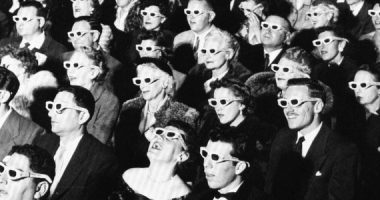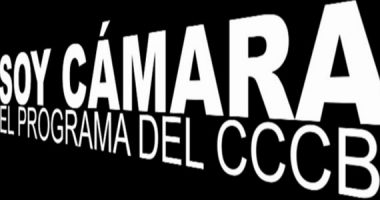
Man sleeping next to some melons in Istanbul, Turkey. Source: Flickr
When you set out to devise a new website, you end up constantly negotiating between the vast possibilities of the medium and the restrictions imposed by the limited resources available to build and maintain a platform. Moreover, when the project involves the evolution of an existing website – particularly a large-scale platform – there is the added difficulty of reviewing the past. But the internet progresses and mutates at high speed, requiring us to constantly adapt to a changing environment. Unable to keep up with this vertiginous pace, website redesigns for large organisations such as cultural institutions end up reflecting their internal dynamics. The key question is whether they can also be a motor of change in these trends.
From static website to contents portal, by way of web 2.0
In 2000, the CCCB website was little more than a calendar informing visitors of its activities. Without the dynamism of Web 2.0 and with connection speeds that were a huge impediment to downloading multimedia elements, the website could not aspire to much more than offering practical, useful information.
Over the years, the information on the website has been joined by multimedia content and the possibility of participation as the basic vectors of the centre’s website. The evolution of our online presence has thus had a lot to do with balancing the relative importance of these three elements.
While most visitors go to the CCCB website to find information, we are also aware that the website is no longer the only means to find out what we do. The existence of alternative sources of information such as social media – which are a channel for passive reception and also a system for reminders in real time – and cultural listings – which offer an overview of the city’s cultural programming – lead us to rethink the need to take a central role as a point of reference in this regard.
On the other hand, we have gradually taken some critical distance from the initial euphoria of social networks, which were originally heralded as a utopia of participation and co-creation. We don’t want to forsake a two-way relationship with audiences, but our experience in several projects shows that participation only adds value when it is focused and there is a clear objective, and that it is more effective to work with specific target groups As such, we think that there are other more appropriate spaces from which to specifically build up an attitude of active participation in audiences, and that the best strategy for us is to strengthen the channels between these spaces and the CCCB website.
One of the particularities of the CCCB is that it does not have its own collection as other museums and cultural centres do. It does, on the other hand, have an extensive documentary archive of material derived from its activities. In particular, the Centre has been generating an increasing amount of multimedia content over the past few years, and the website has reached an important turning point: a shift from content that reproduces the Centre’s face-to-face programming for the web, to content that expands the programming through complementary materials. In other words, the online experience is no longer just a reflection of what goes on at the CCCB, but a supplement that adds value.
This content is the third vector with the potential to become the website’s distinctive feature, making it a benchmark in its field. Without the geographic limits set by the CCCB’s programming, there is a long road ahead in regard to content. Nonetheless, it is the only road that will allow us to move towards a truly digital presence.
The CCCB Lab blog: A model to be explored
One option is the path that has been taken by the CCCB Lab blog, which was initially created as a kind of window for sharing the Lab’s work in progress, and at the same time allow audience participation. As such, the posts were strongly linked to the work taking place at any one time, leading to a great diversity of styles and points of view. On one hand, this was a fresh and dynamic approach. But it also seriously limited the blog’s growth, given that it was basically a tool that tied in with the Centre’s activities.
When the blog was redesigned in 2012, there was a change of strategy: the idea was to transform a tool that had become a means of dissemination, expanding it into a digital magazine. The CCCB Lab team set an editorial line based on the department’s research activities and projects, which was expanded and explored through the regular publication of feature articles. This shift involved two major conceptual changes:
Firstly, a change in work processes. The contents of the blog are no longer the end result of the Lab’s working processes; instead, they are an element that requires advance planning with an overall picture in mind. Specifically, it means integrating the creation of content as a key element of the CCCB Lab production process, with an understanding that this content is important in itself and not subservient to other activities. This means a shift from a series of discrete contents that gradually form a story as they come together, to an established narrative that requires and generates different material according to its needs.
Secondly, it also involves a change of discourse, by which online contents replace the department’s activities as the engine of the narrative. The website is thus no longer just a source of information that allows visitors to learn more about a particular activity. Rather, it mainly works in the opposite direction, bringing users to the programming by way of an expanded universe. At the same time, this entails a more unified, transversal discourse that sets up points of convergence between different projects, both conceptually and in terms of production dynamics, and highlights the need to adhere to thematic lines. If we cease to see different activities as separate watertight containers and connect them by means of overall programming lines, the contents will also be able to build on these lines.

On the top, image of CCCB website on 2004 and 2004. Down, the home page of the actual website.
A website in transition
At present, cultural institutions are still exploring their role on the net, and there is no clear, specific answer to what an entirely virtual experience of the CCCB would be like. But everything seems to suggest that it will revolver around content. Projects such as the CCCB Lab blog and the websites for the Big Bang Data and Sebald Variations projects confirm this direction. Nonetheless, there are differences of scale that complicate the use of this model in the CCCB website. Obviously, the larger the project, the more difficult it becomes to implement and accept changes. And in this case we are talking about an important turnaround, a change based on a radically different approach.
As a website evolves, it always comes up against a process of “natural selection”: it is ultimately users who decide the functionalities that interest them most on the website, dooming the least-used to disappear, even those that we considered incredibly useful when we came up with them. Similarly, if a website does not adapt to the organisation’s working processes there is a risk that it will be impossible to maintain it effectively, which would in practice lead to the inoperability of some parts. So the idea is to calibrate the level of progress that is possible and realistic within the available resources.
The new CCCB website springs from a time of transition, so we don’t see it as a final stage but as a tool in the process of transformation of the centre’s digital strategy. As such, it does not radically break away from the line it had followed until now, but introduces elements that favour and pave the way for an evolution towards a more all-encompassing narrative, in which contents take on more importance.
On one hand, the website structure avoids setting up pre-defined, hierarchical categories, in favour of a network structure in which contents and activities interact in different ways. These interactions also bring out the thematic lines that run through the CCCB and underpin its programming.
At the same time, multimedia contents take on more importance in the entire website. While the centre’s activity remains at the core, it is constantly surrounded by the materials that are generated around it.
These contents also have their own space, where they can become strong enough to generate their own discourse, independently of the Centre’s activities.
To sum up, we see the website as a dynamic project that has to continue evolving so as to correct its weaknesses and boost its strengths even further. We know that the nature of the internet forces us to reinvent ourselves more often than we can handle, which is why it becomes necessary to work on a permanent beta version, constantly striking a balance between our desire to evolve and the real capacity to achieve this aim. Over time, a large-scale website ends up becoming a monster that is difficult to move and push forward. So it has to go step by step, without pause, in a direction that we pre-define as much as we can.






Adri | 24 December 2015
I, un dia, el dinosaure es va extingir!
L’anomenada “Beta permanent” és compartida per tots, alguns en diuen versions o evolucions, altres vida, ara, res és permanent, la transició no s’acaba.
Gran article.
Equip CCCB LAB | 11 January 2016
Moltes gràcies!
Leave a comment